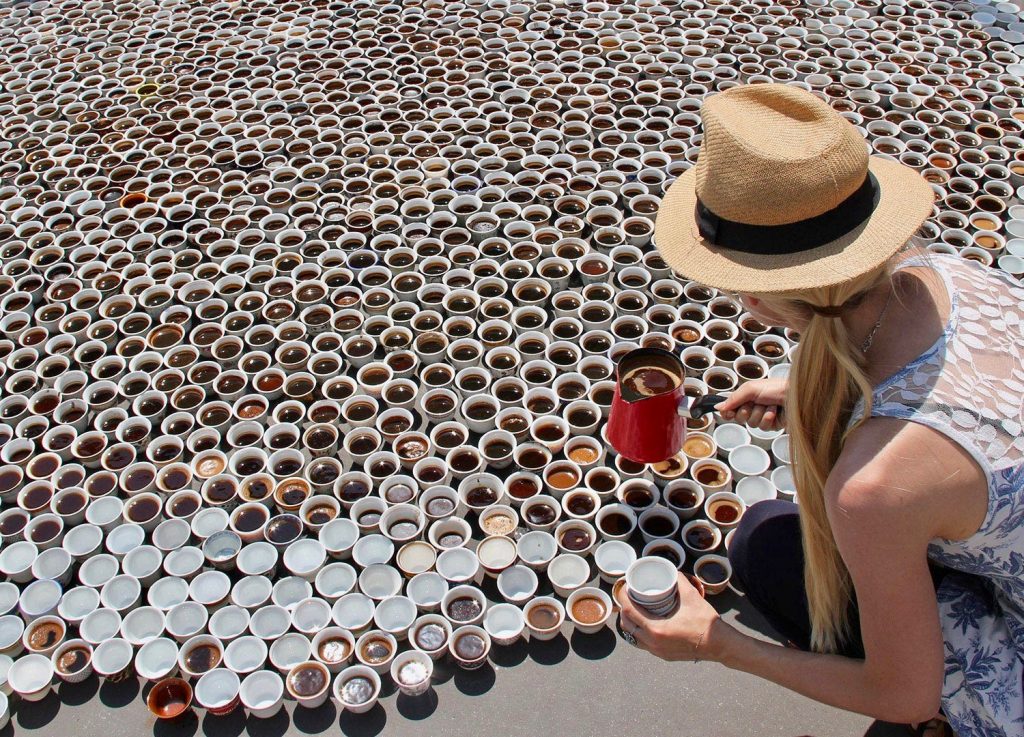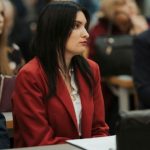
Banja Luka native Aida Šehović was hit by war when she was just 15 years old. Now, Aida has made it her mission to use art as a means to commemorate the victims of genocide and to educate citizens worldwide about the consequences of war.
Banja Luka native Aida Šehović was hit by war when she was just 15 years old. To escape the realities of conflict, her family first fled to nearby Turkey, then to Germany, and, finally, to the United States. Now, Aida has made it her mission to use art as a means to commemorate the victims of genocide and to educate citizens worldwide about the consequences of war.
“The war hit when I was 15 years old. Many of the questions I had back then still remain unanswered. What were the causes of this war? Why did people, who used to live together in peace, take on arms and become criminals? Who is to blame and why didn’t the world do anything about it?” Šehović inquires during an interview with Balkan Diskurs. She then refers to the potential contributions art can make when dealing with heavy issues, such as war.
Šehović obtained a Master of Fine Arts from Hunter College in New York and now considers the commemoration of July 11th – the official day of remembrance of the Srebrenica genocide – a responsibility that began in Sarajevo in 2006 with her first traveling exhibition “Why Aren’t You Here?”. As part of that public performance, Šehović poured coffee into 923 donated fildžani – Bosnian cups that traditionally lack handles.
“This is a public monument that grows in front of everyone’s eyes,” she says. “The goal is to pay tribute to the victims of Srebrenica, who were murdered brutally and systematically killed, as well as to mark this as a day of unification among all people. It is necessary to educate those who have not heard about Srebrenica and to “symbolically” stand in opposition of such crimes.”

“The very idea of this “traveling monument” is part of a long process that remains ongoing,” Šehović states. It all officially began in 2004 when she visited Bosnia and Herzegovina (BiH) for the first time after leaving her home country.
“That was around the time when the first mortal remains of the victims were being uncovered, identified, and laid to rest in Potočari, which had a huge impact on me. I, thus, began reading stories about survivors and those who had lost their loved ones. I remember the story of one woman, in particular, who said she missed her husband the most because she no longer had anyone to drink coffee with,” says Šehović, emphasizing that coffee is a huge part of the Bosnian culture and that the fildžan represents this long-standing social tradition.
Genocide is a crime against humanity. This is why the participation of people of different nationalities, skin colors, and beliefs is such an important part of the performance – because it represents a united stand against hatred.
“People still view BiH as a country that is stuck in its past. It did not turn a new page, but is instead leading a kind of peaceful war that continues through other mediums,” says Šehović while noting that we cannot proceed into future without resolving the issues of the past.
The title “Why Aren’t You Here?” was inspired by one of Jadranka Stojaković’s, a former Yugoslav singer, songs. Šehović explains, however, that the title’s meaning cannot be sufficiently translated into English as it encapsulates an inexplicable sense of loss.
The installation was exhibited in Sarajevo in 2006 and in Tuzla in 2008. The traveling monument has also been displayed in Stockholm, Chicago, Burlington, Toronto, Geneva, and New York.
ŠTO TE NEMA – BOSTON trailer from Aida Šehović on Vimeo.
“When I was pouring coffee into the fildžani at the first exhibition in Sarajevo, women offered to help. It was in that moment that I realized that the people should be the ones who to carry out the performance, a notion that was later incorporated into the Tuzla performance,” recalls Šehović, who, during that process, began to recognize the power of art as a way to bring people together.
This installation is so special because it is displayed in a different city and incorporates something new every year and is displayed in prominent and visible locations.
“Art provides an important channel to bring people closer to past events. War can happen to anyone; no one is an exception. For most people, however, it is a difficult subject to talk about. That is why art plays such an important role when it comes to topics that are difficult to approach,” explains Šehović, adding that people become indifferent because they are bombarded daily with negative information.
Šehović believes that young people, especially those who survived war or genocide, have a responsibility to spread awareness regarding the problems that arise through war, nationalism, and fascism.
“I believe in young people from BiH because they have proven that they can be successful in the world. They have built new lives from nothing, just like my family who came to the US empty-handed did. However, I am also aware that the political situation in BiH does not facilitate change,” says Šehović. She concludes with the message that young people should be given a chance and, if not, then they have to work to create their own opportunities.
This publication has been selected as part of the 2018 Srđan Aleksić Youth Competition, a regional storytelling competition that challenges youth to actively engage with their own communities to discover, document, and share stories of moral courage, interethnic cooperation, and positive social change. The competition is a primary component of the Post-Conflict Research Center’s award-winning Ordinary Heroes Peacebuilding Program, which utilizes international stories of rescuer behavior and moral courage to promote interethnic understanding and peace among the citizens of the Western Balkans. The final winners of the 2018 competition will be announced in the coming months.
The Balkan Diskurs Youth Correspondent Program is made possible by funding from the Robert Bosch Stiftung and the National Endowment for Democracy (NED).







